
All categories
Featured selections
Trade Assurance
Buyer Central
Help Center
Get the app
Become a supplier

(7939 products available)













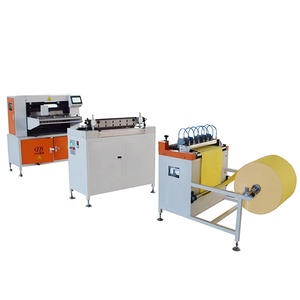



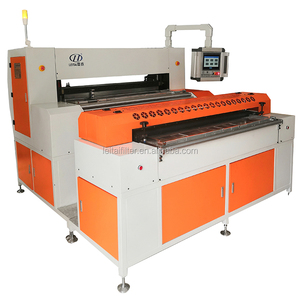
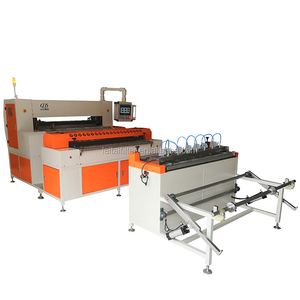

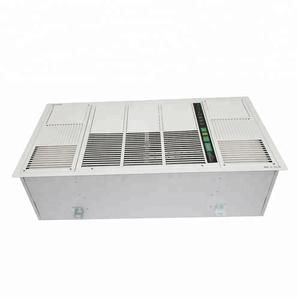




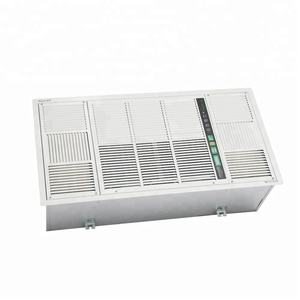

An air filter pleating machine is an essential instrument in the production of air filters. It is used to fold or pleat filtering materials to create the correct positioning for filtration. Various types of air filter pleating machines can be used to manufacture air filter components, such as the pleats and the frame.
The following air filter pleating machine types are available for making pleats and other filters:
The air filter pleating machine is a specialized device used to manufacture the pleats for filters used in air conditioning systems and other ventilation technology. It creates a filter media that's been designed to maximize airflow while trapping dust, pollen, and other particulates to ensure clean air is circulated in living and working spaces.
Because of the vital role that clean air plays in supporting human life, there is a strong demand for air filter pleating machines across a number of industries and sectors, all of which need reliable filter solutions. Here are just a few of the demand-pull industries that either directly use air filter pleating machines or are at least part of the supply chain supporting filter production and use.
HVAC and Construction
Heating, ventilation, and air conditioning (HVAC) systems are central to building construction. With urban pollution becoming an ever-greater problem and many parts of the world experiencing extreme heat, filters to remove harmful particulates from the air and also to ensure that only the right quantity of air passes into buildings are a must. The pleated filters produced by air filter pleating machines provide greater surface area than non-pleated filters, increasing their capacity to trap dust and allow clean air through.
Automotive
While the world is slowly transitioning to electric vehicles that don't need internal combustion engines, pleated air filters will continue to be used in vehicle cabins to keep dust and pollen out. Pleated filters are also used in other industry domains, such as pleated oil filters in filter-pleating machines for hydraulics.
Consumer Electronics
More and more people globally use portable air purifiers to ensure the air they breathe indoors is clean. Air filter pleating machines have a big role to play in producing filters for these devices, which are especially in demand in urban areas with very high pollutant levels.
Healthcare
Medical facilities need high-quality, contaminant-free air. Healthcare institutions use specially designed HVAC systems with air filters contained in them to ensure this is possible. Moreover, air filter pleating machines are also used to produce filters for other devices used in the health industry, like respirators and masks. The filters produced by the machines help protect both patients and medical staff.
These are only some of the many industries and applications for which air filter pleating machines are critical.”
Selecting the right air filter pleating machine requires considering various factors relevant to the buyer's needs.
Output demand:
Businesses' output demand influences the machine's capacity they require. Larger production businesses may need a high-speed pleating machine to meet their high demands, while smaller businesses may require a machine with lower output speeds.
Filter types:
Inclusiveness is crucial when choosing an air filter pleating machine. Filter types range from filters made of fiberglass, synthetic, electrostatic, and activated carbon to more significant filters of varying configurations, such as square, cylindrical, and rectanglular. It is essential to ensure the selected machine can work with the specific filter material and shape the business intends to use.
Machine components:
Key parts of an air filter pleating machine, like the feeder system that brings in the filter media, the forming system that creates pleats in the filter media, the stacking system that organizes the pleated filter media, and the fastening system that secures the pleated filter media, may all differ in efficiency and effectiveness between machines. Choose a machine with its components working efficiently together to help produce high-quality air filter pleats rapidly.
Level of automation:
Machines can vary in how automated they are, with some being fully automatic, requiring no manual help, and others only being semi-automatic, where operators still need to assist with some tasks. Consider choosing a machine that fits the workforce's skill level and availability.
Space availability:
How much space filters need to manufacture is also essential. Consider the machine's size and how much floor space it takes up. Ensure there is enough space for the machine and filter pleating operations to go on smoothly without cramping the area or obstructing other activities.
Budget:
The cost of the air filter pleating machine will differ depending on its features, specifications, and level of automation. Determine the budget when selecting the suitable machine.
Q1: What is an air filter pleating machine used for?
A1: An air filter pleating machine creates pleats in filters used in heating, ventilation, and air conditioning systems. The filters protect people from breathing harmful dust and bacteria.
Q2: Can the air filter pleating machine be integrated with other systems?
A2: Air filter pleating machines are standalone systems, but some models have automated features like digital controls and feeder integration.
Q3: What safety features does an air filter pleating machine have?
A3: The machine has various safety features, including emergency stop buttons, interlocked guarding, overload protection, and CE compliance.
Q4: Does the pleating machine require special maintenance?
A4: No. The machine does not demand any particular maintenance. Regular inspections, lubrication, and cleaning are enough to keep it running smoothly.
Q5: What types of filters can a pleating machine fold?
A5: The pleating machine can process different filter types, including cardboard, synthetic fiber, polyester, and HEPA plies. However, the compatibility depends on the specific design of the filtering machine.